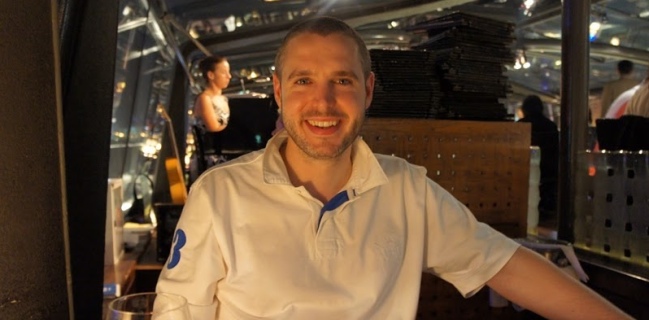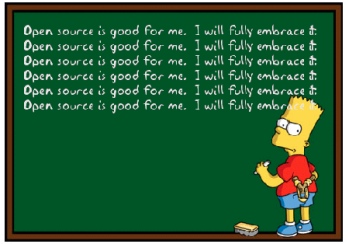The Setup.
A couple of months ago I wrote a post entitled How I Use a MacBook Pro (May 2011). Since that time I’ve stumbled across a blog entitled The Setup which asks a range of creative people four questions about how they roll. I’ve realised the benefit of putting what I do into words, complete with links. Once you’ve read what’s below, I suggest heading over to usesthis.com to check out other people’s contributions!

Doug Belshaw
Researcher/Analyst, JISC infoNet & Director, Synechism Ltd.
1. Who are you, and what do you do?
I’m Doug Belshaw and I work at Northumbria University where JISC infoNet are hosted. I’ve also recently started an educational consultancy called Synechism Ltd and am co-kickstarter of Purpos/ed. At heart I’m an educator interested particularly in social justice issues, digital literacies, mobile learning and open educational resources. Prior to that I worked in schools and academies as Director of e-Learning and taught History for seven years.
2. What hardware are you using?
I’m pretty much attached to either my iPhone 4 or (work-provided) early-2010 MacBook Pro most of the time. Occasionally I break out my iPad (original wifi version) but I prefer my Kindle for reading. I write in Moleskine notebooks and then scan them in so that they’re available to me digitally anywhere, using the Tim Ferriss method of indexing. At work, although I try to use my MacBook Pro as much as possible, I’ve just had my work machine upgraded to a fairly decent spec (AMD Athlon II X2 3Ghz with 4GB RAM and Windows 7). Multiple desktops are a must – I run dual monitors on my work PC and six virtual desktops via Spaces on the MacBook Pro.
3. And what software?
I experiment with software regularly, but my staple apps and webapps are the following. I’m not a big fan of email, but GMail (I’ve got 5 accounts) makes life more bearable – as does the Sparrow app. I’ve found that Xobni makes Outlook bearable. My job would be a lot harder without Skype for interviewing and catching up with people and TweetDeck for keeping my finger on the pulse (I’m also a big fan of LinkedIn Signal, Google+ and Quora for this). I’m a lot less frustrated regarding passwords now that I’ve transferred wholesale to LastPass.
Dropbox keeps my files in sync between my machines, and I just love the fact that I can send a link to a large file in there from the iPhone app wherever I am. Google Apps is a wonderful service and I’m a massive fan of Google Calendar – I’m so much more organised due to its reminder functions. For keeping up with RSS feeds I use Feedly, which is a front end for Google Reader. I flirt with Evernote from time to time, using it sporadically but I’m still grappling with how to use it effectively. Licorize is my go-to place to store bits of digital things.
Shorter writing tends to be via WordPress or Google Docs, with longer stuff powered by Scrivener, with which I’ve been writing my doctoral thesis. Papers is a godsend for organising academic journal articles. I’ve recently downloaded iA Writer for the iPad which looks useful – I’m going to have to get myself the offical keyboard. If I’m presenting I’ll use Keynote, which I find to be a wonderfully useful tool. Despite having Adobe CS5 provided through work, I mainly use Keynote and Seashore for image creation and editing. If I’m brainstorming I’ll use XMind.
Spotify, Last.fm and SomaFM provide the tunes to which I listen for most of my waking hours. I also listen to a lot of podcasts whilst commuting and doing tasks that don’t require much in the way of creativity. I’ve recently come across the DownCast iPhone app which making this a more positive and hassle-free experience (it downloads podcasts in the background).
I’m not a paranoid person, but I do subscribe to iPREDator, a VPN provided by the people behind The Pirate Bay as well as using PeerGuardian. I notice that my download speeds – and not just by Bittorrent (for which I use Vuze) – are much increased when BT don’t know which sites I’m connecting to. There’s other tools that make my life easier like Cloud.app, Timey and Cinch as well as other webapps I haven’t mentioned like Posterous, Amplify, Delicious, Greplin, Flickr, ImageStamper, Huffduffer, Instapaper (love the auto-send-to-Kindle feature!)
Right now I’m alternating between Google Chrome and nightly builds of Webkit, but up until recently was using Rockmelt as my browser. I’m a bit of a browser tart.
4. What would be your dream setup?
I’d love a Mac Pro. A geeky aim in life for me is for any app to load on my Mac without it ‘bouncing’ in the dock. That would be awesome. I’d also love a 30″ Apple Cinema display, but that probably isn’t happening anytime soon. I’d also love not to have to go into the office every day and be able to work remotely from something like an OfficePOD at home. I’ve got a study, but it’s a garage conversion so can be loud and is too much part of the house to be productive. For now, I’ll have to make do with coffee shops (where I’m able, bizarrely, to get in the zone).

 I’m not attempting to get into a flame war with this post. It’s a personal reflection and more of a statement than an argument. Please comment appropriately! 🙂
I’m not attempting to get into a flame war with this post. It’s a personal reflection and more of a statement than an argument. Please comment appropriately! 🙂